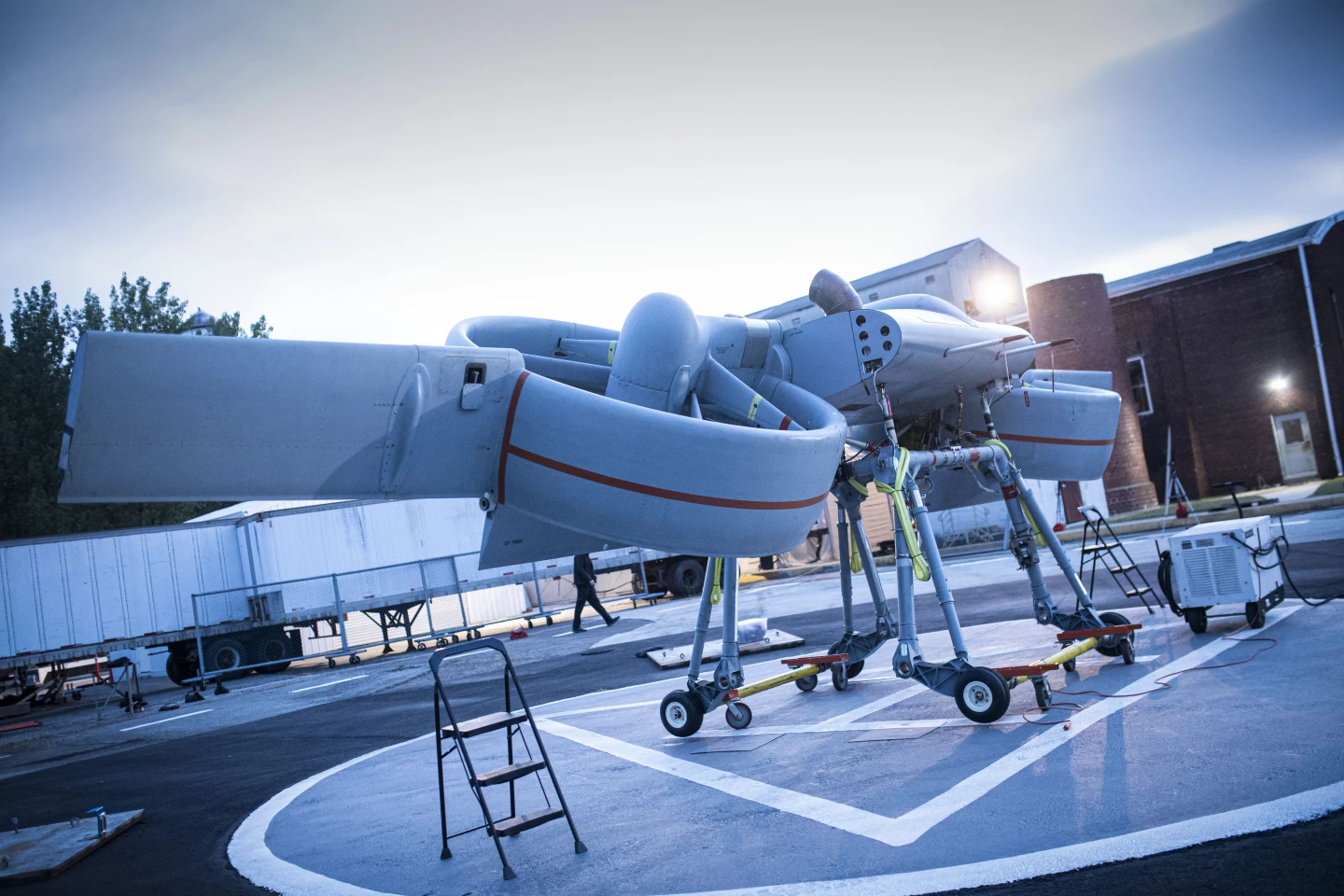Piasecki Aircraft's Aerial Reconfigurable Embedded System (ARES) tilt-duct VTOL aircraft has completed its maiden flight. On September 6 at Piasecki's West Helipad in Essington, Pennsylvania the autonomous rotorcraft made two tethered hover flights.
ARES began life as a DARPA project designed to fill the gap caused by the chronic shortage of helicopters needed for military operations. Such rotorcraft have become indispensable to modern armed forces – not the least for supporting small distributed combat units in the field that may be in rough country far from a decent landing field.
To remedy this, DARPA in 2014 began seeking concepts for a VTOL flight module that can be remote controlled, operated autonomously, or by a pilot in a cockpit module. It needed to be able to carry a variety of interchangeable payload modules with up to 3,000 lb ( kg) of cargo making up 40% of the takeoff weight. Propulsion for the project required two tilting ducted fans for high maneuverability.
Funded by an US Army and Air Force under a US$37-million contract, the recent flight tests saw the ARES Flight Module hover for one minute before making a controlled descent. A US Army Mobile Multiple Mission Module (M4) was attached and a second hover test was made to demonstrate how the Flight Module can maintain stability using a fly-by-wire system that's a miniaturized version of ones normally found in much larger aircraft.
When mature, ARES will be able to operate from small field bases or ships for a wide variety of missions, including reconnaissance, medical evacuation, field resupply, and others.

"Since its origins as a DARPA conceptual design project, Piasecki has led ARES through years of research and development – design iterations, rigorous component testing, system level validation, and more – to mature the technology leading up to today’s landmark achievement," said John Piasecki, CEO of Piasecki Aircraft. "ARES represents another significant milestone in Piasecki’s 80-year history of bringing innovation to flight. I’d like to thank our Air Force and Army customers as well as our dedicated employees and partners for their continued support as we move forward with the next phases of development. After successfully expanding the aircraft’s flight envelope, we will implement modifications to enable flight demonstration of a fully autonomous CASEVAC [casualty evacuation] and logistics resupply capability. Successful flight demonstration of the ARES proof of concept demonstrator significantly reduces risk and accelerates the development timeline for a family of operational tilt-duct configurations for multi-mission VTOL UAS and high-speed VTOL applications."
Source: Piasecki Aircraft












